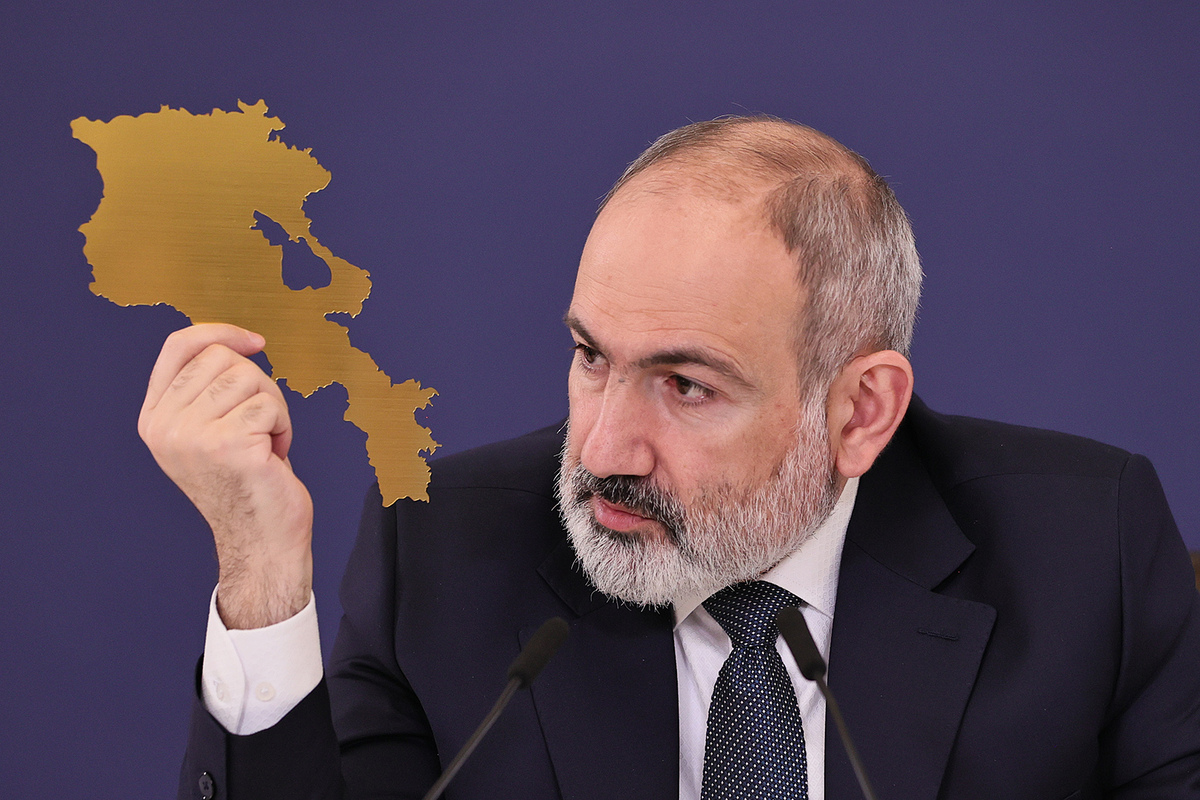
Nikol Pashinyan (photo by Official Prime Minister website)
Following a recent live interview, Armenian Prime Minister Nikol Pashinyan has hinted that the long and difficult process of border demarcation with Azerbaijan could potentially be ready to start. There are other signs, however, that the process carries with it substantial risks both regionally and domestically
While the long, difficult process of border demarcation between Armenia and Azerbaijan remains a major obstacle to normalising relations between the two sides, there could now be signs of some movement to start the physical process on the ground.
Eight meetings between the Armenian and Azerbaijani border commissions have been held since May 2022, though so far focused on organisational issues. Following a live interview with Armenian Prime Minister Nikol Pashinyan held on 12 March, however, there could now be signs of a breakthrough.
Indeed, the issue has surfaced again of eight villages situated in the territory of one side, but controlled by the other since the early 1990s. Often referred to as enclaves, half are actually not and instead part of Azerbaijan’s Gazakh region situated directly across the border from Armenia’s north-eastern Tavush region, but controlled by Yerevan.
The remaining four are actual enclaves. There is also a formerly inhabited Armenian enclave in Azerbaijan and another four Azerbaijani villages inside Armenia.
Holding aloft a golden cutout map of the Republic of Armenia, minus any representation of the now depopulated and dissolved Karabakh, Pashinyan set out to convince the population that territorial claims outside the country’s internationally recognised borders were now a thing of the past.
However, charge critics, this came only after Azerbaijani Deputy Foreign Minister Shahin Mustafayev, also head of Baku’s border commission, declared in no uncertain terms three days earlier that demarcation could not start until the four Azerbaijani non-enclaves were returned.
For some observers, this came as no surprise – the meeting of the Armenian and Azerbaijani border commissions had anyway been held in the Tavush-Gazakh area of the shared border several times.
"There have never been villages with such names in the territory of Armenia”, Pashinyan told journalists – “not only in Soviet times but also after”. Further, he noted, in an attempt to counter known opposition claims, any disruption to existing infrastructure passing through or by that area could be re-routed if necessary.
He promised to visit several Armenian villages there to allay such fears, something that he did on 18 March, further validating belief that he was serious.
Alleging that a new war could break out if the four non-enclave villages were not returned, he had no choice, seemed to be the message. It was also perhaps a way to test the water domestically if he were to do so.
For now, there is little visible opposition, but that is not to say that there isn’t any. Nationalists are particularly irked, especially as most still seem to have unrealistic claims on snatching back Karabakh from Azerbaijan.
On 24 March, for example, dozens of members of the Combat Brotherhood militia travelled to Voskepar, an Armenian village on the Tavush-Gazakh border, ostensibly to conduct routine training exercises but actually rather to derail such a move.
Almost 50 people were detained. In response, three individuals associated with the National Democratic Pole, an ultra-nationalist political coalition, attempted to assault a police station in the Nor Nork district of Yerevan.
Two of the three assailants were injured by the shrapnel of one of their own grenades while the other gave himself up to the Armenian National Security Service after two hours of negotiations. The botched assault was reminiscent of another, albeit more successful attack on a police station to prevent a peace deal with Azerbaijan in July 2016.
The similarities didn’t end there. One of the National Democratic Pole’s key members is another group, Sasna Tsrer, led by previously imprisoned Lebanese-Armenian former military commander Jirayr Sefilyan and the instigators of the 2016 assault that resulted in a two-week siege and the murder of three policemen.
Though the three assailants this time appeared to be acting alone, the government was taking no chances. The next day, police searched the homes of members of both groups.
But even if public support for the opposition or such actions remains in single digits, Pashinyan has lost majority backing for his premiership. Many Armenians remain apathetic or opposed to all. Thus, the propensity towards violence by nationalist and ultra-nationalist forces could continue in the absence of any effective political force opposed to the government.
On 14 March, the same day as Pashinyan’s interview, four men were arrested and charged with planned bomb attacks against members of the ruling Civil Contract party.
There also remains a distinct lack of trust between Yerevan and Baku. At the weekend, Baku accused Armenia of instigating troop movements on the fragile border.
Azerbaijan, countered Pashinyan, was “trying to find […] excuses” to start a “new, large scale war”. The claims of mobilisation were also rejected by the European Union Mission in Armenia (EUMA) that regularly patrols the border, or what it refers to as the “Line of Confrontation”.
“Armenia does not have any claims outside its internationally recognised, sovereign territory, including the territories of the mentioned villages mentioned by Azerbaijan”, Pashinyan reiterated again. He has also confirmed, at least declaratively, that border demarcation could start with the Tavush-Gazakh section.
blog comments powered by







